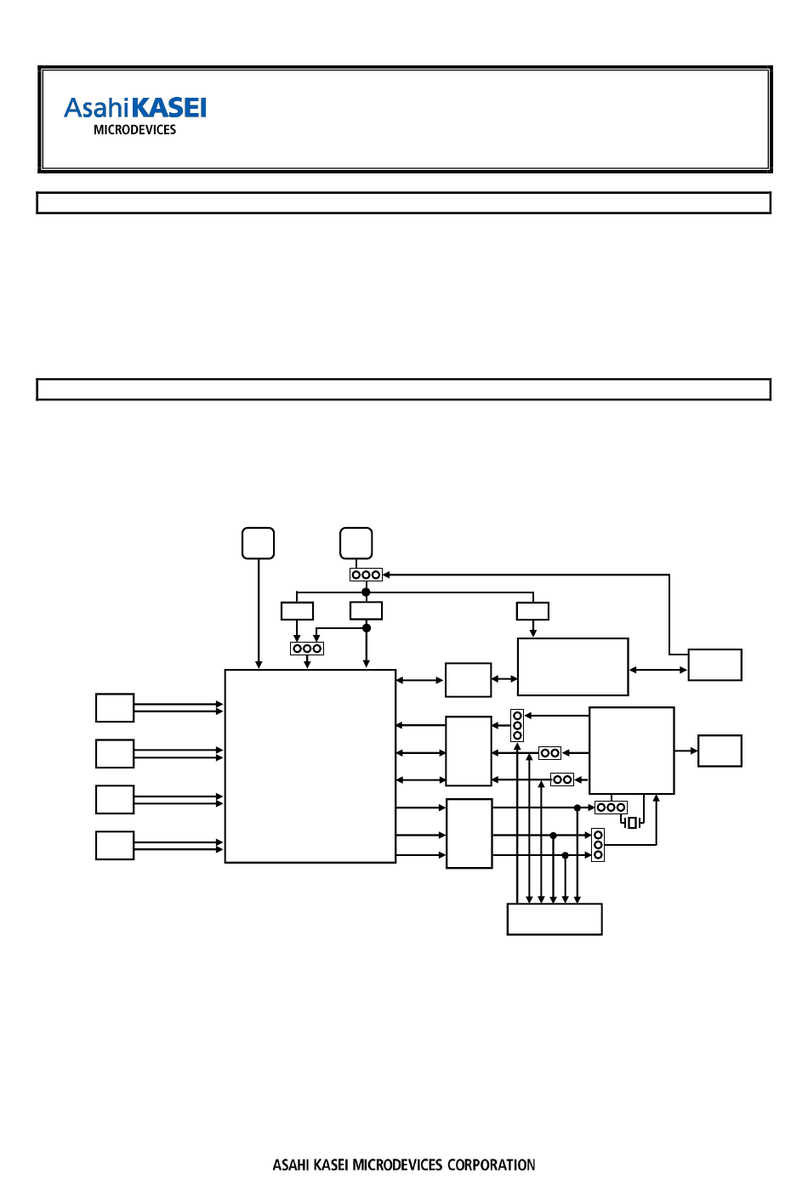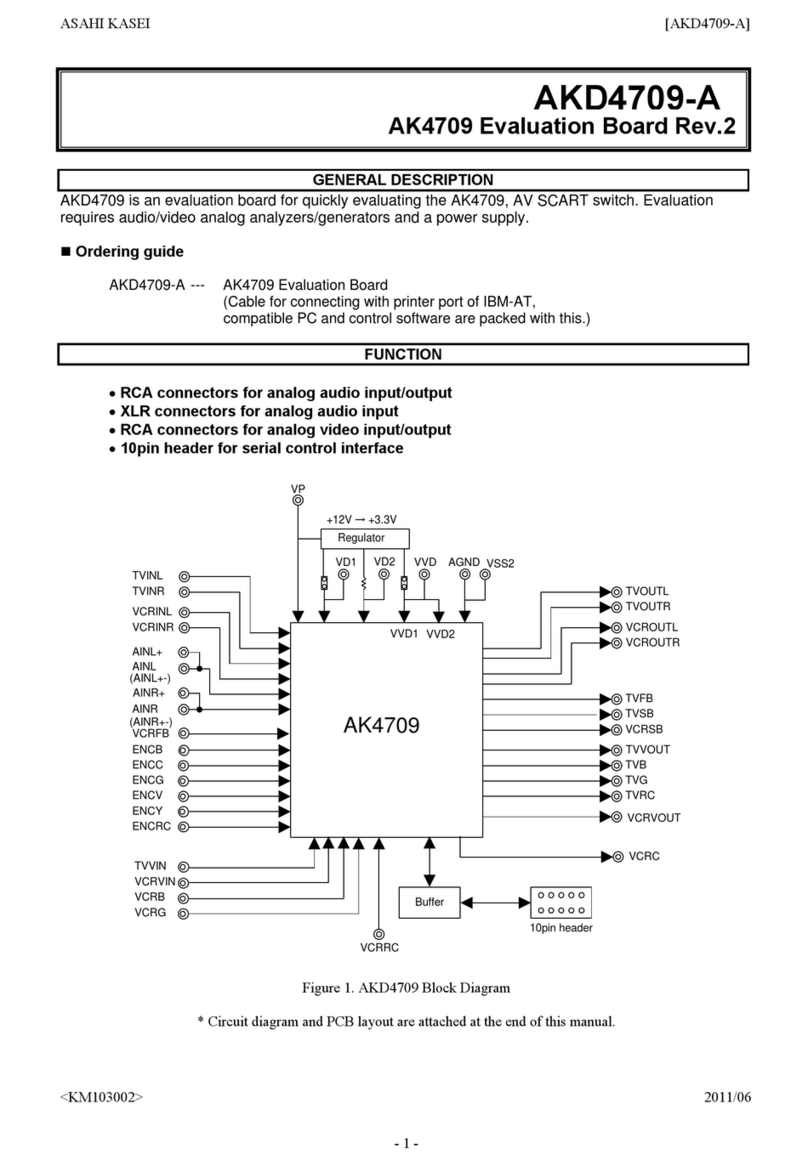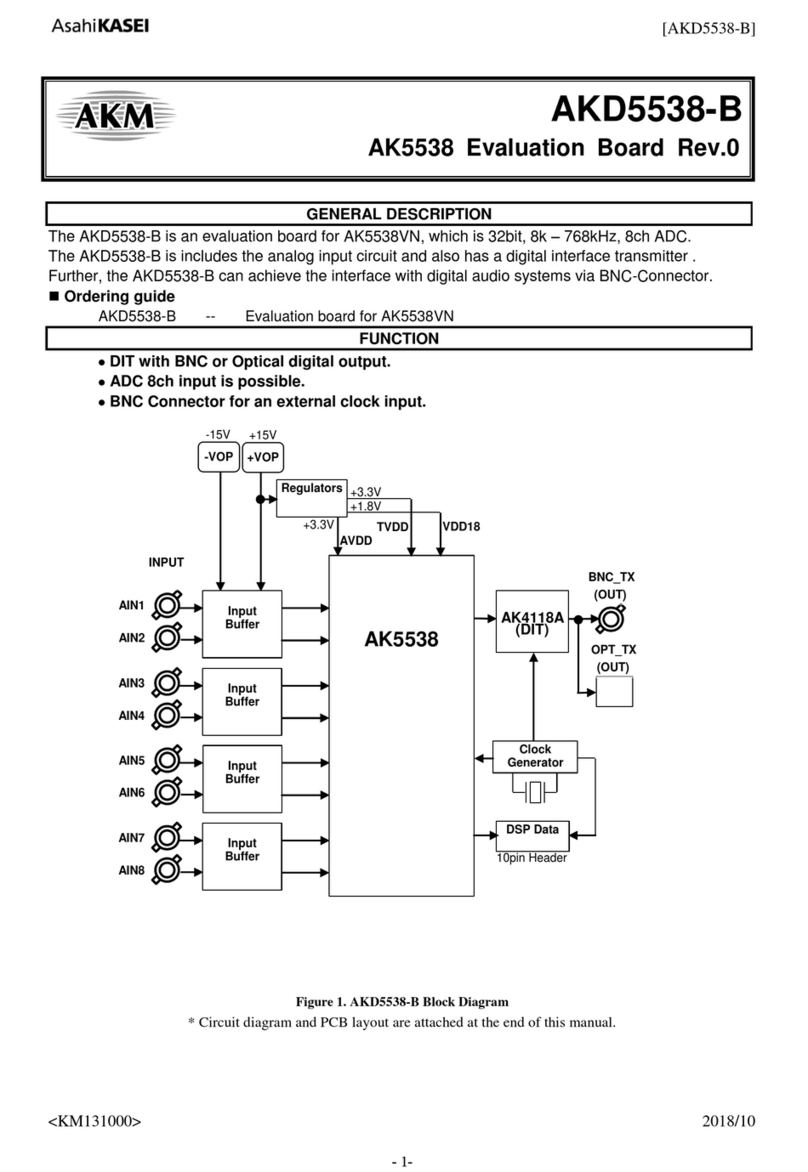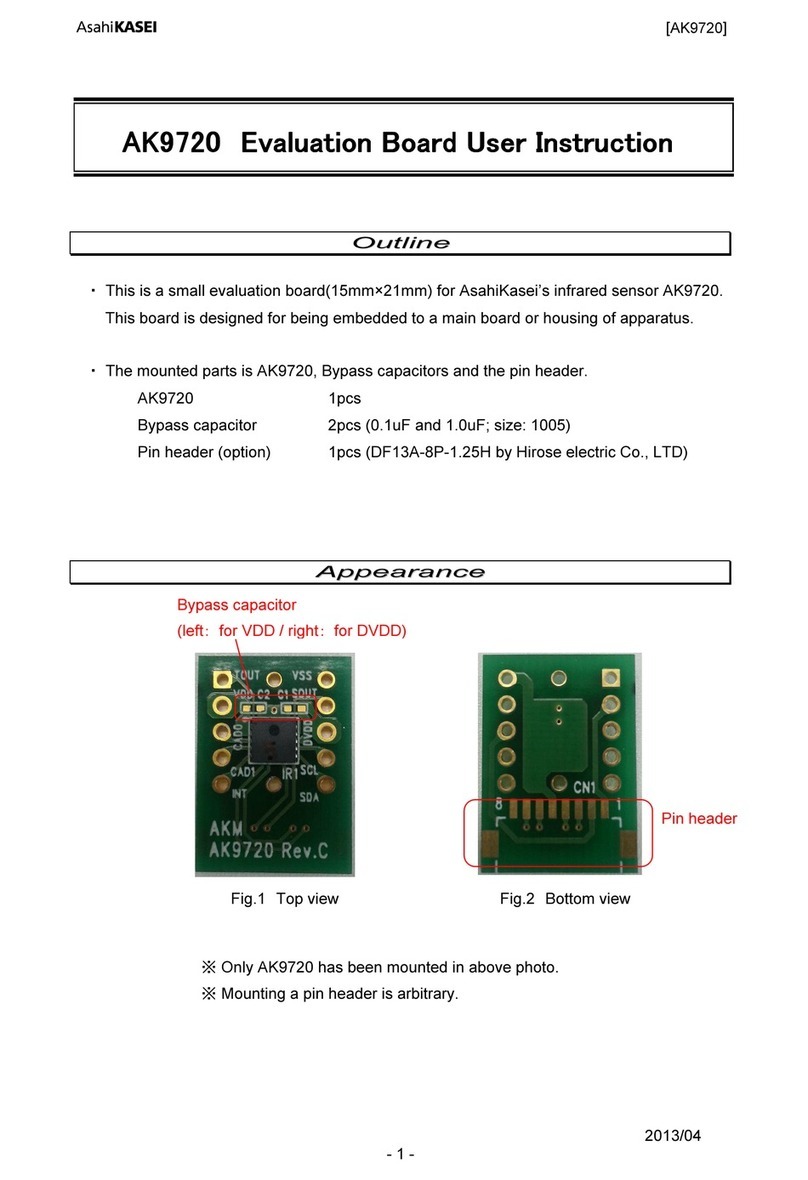
[AKD4220-A]
<KM083401> 2012/04
- 2 -
EVALUATION BOARD MANUAL
Operation sequence
1) Set up power supply lines.
Name of
jack Color
of jack Voltage Used for Open / connect Default
Setting
+12V Green +12V Regulator (T1)
Should be always connected when
power supply lines are supplied from
regulator of T1. In this case “JP9
(REG)” is set to short.
+12V
AVDD Red +5V AVDD of AK4220 Should be always connected when
AVDD is not supplied from regulator
of T1. In this case “JP9 (REG)” is set to
open.
Open
VVDD1 Bule +5V VVDD1 of AK4220 Should be always connected when
AVDD is not supplied from regulator
of T1. In this case “JP10 (VVDD1)” is
set to open.
Open
D5V Red +5V Regulator (T2) Should be always connected when
JP2(DVDD_SEL) is set to DVDD side.
Can be open when JP2(DVDD_SEL) is
set to REG side.
Open
DVDD Orange +3.3V DVDD of AK4220 Should be always connected when
DVDD is not supplied from regulator
of T1 and T2. In this case “JP15
(DVDD)” is set to open.
Open
D3.3V Orange +3.3V Digital Logic Should be always connected when
D3.3V is not supplied from regulator of
T1 and T2. In this case “JP13 (D3.3V)”
is set to open.
Open
AGND Black 0V Analog Ground Should be always connected. 0V
VVSS Black 0V Analog Ground Should be always connected. 0V
DGND Black 0V Digital Ground Should be always connected, when JP1
(GND) is set to open. 0V
Table 1. Set up the power supply lines
(Note) Each supply line should be distributed from the power supply unit.
2) Set-up jumper pins and DIP switches. (See the followings.)
3) Power on.
AK4220 should be reset once bringing SW2 (PDN) to “L” upon power-up.



































